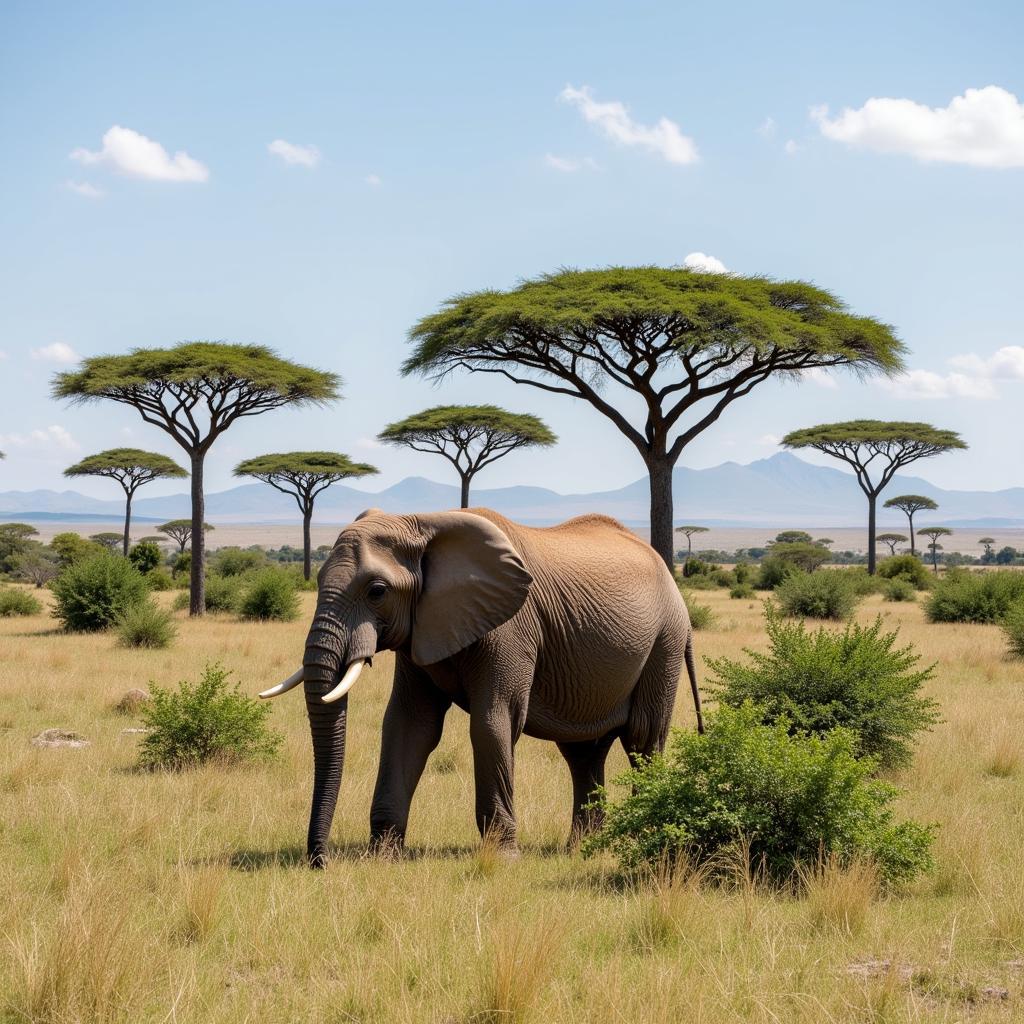African Elephant Original Habitat: A Comprehensive Guide
The African elephant’s original habitat encompasses a vast and diverse range of environments across the African continent. Understanding these habitats is crucial to ensuring their survival and appreciating the intricate relationship between these magnificent creatures and their surroundings. Let’s delve into the world of the African elephant and explore the landscapes they call home.
The African elephant, the largest land mammal on Earth, once roamed freely across much of the African continent. Their original habitat spanned from the lush rainforests of Central Africa to the sprawling savannas of East Africa and the arid deserts of Southern Africa. This diverse range speaks to the elephant’s adaptability, allowing them to thrive in a variety of ecosystems. However, habitat loss due to human encroachment remains a significant threat to their long-term survival. Exploring the specifics of these original habitats allows us to understand their needs and the importance of conservation efforts. For more on African Big Game animals, you can visit this informative page.
Exploring the Diverse Habitats of the African Elephant
African elephants are categorized into two distinct species: the African forest elephant and the African savanna elephant. While their ranges overlap, each species has adapted to specific habitat preferences. Understanding these preferences is vital for conservation efforts.
Forest Elephants: Masters of the Dense Jungle
The African forest elephant, smaller than its savanna cousin, inhabits the dense rainforests of Central and West Africa. These forests provide them with shade, abundant vegetation, and a crucial role in seed dispersal. The forest elephant’s diet consists primarily of fruits, leaves, and bark, shaping the forest structure and promoting biodiversity.
Savanna Elephants: Roaming the Open Plains
The African savanna elephant, the larger of the two species, thrives in the open grasslands and woodlands of East and Southern Africa. Their larger size and broader diet allow them to navigate and consume the coarser vegetation found in these habitats. Savanna elephants play a vital role in maintaining the savanna ecosystem through grazing and seed dispersal. They create pathways through the dense vegetation, benefiting other animals, and their dung helps fertilize the soil.
 African Elephant in its Savanna Habitat
African Elephant in its Savanna Habitat
Threats to the African Elephant’s Original Habitat
Habitat loss and fragmentation pose the greatest threats to African elephants. Human expansion, agriculture, and logging have significantly reduced their natural range, forcing them into smaller, isolated populations. This increases competition for resources and makes them more vulnerable to poaching and human-wildlife conflict.
Human-Wildlife Conflict: A Growing Concern
As human populations grow and expand into elephant territory, encounters between humans and elephants become increasingly frequent. Crop raiding by elephants can devastate local communities, leading to retaliatory killings. Finding sustainable solutions to mitigate human-wildlife conflict is crucial for the survival of both elephants and the people who share their land. Learn more about the Big Five animals in Africa, including elephants, and their importance for kids here.
Conservation Efforts: Protecting the Future of African Elephants
Numerous organizations and initiatives are dedicated to protecting African elephants and their habitats. These efforts include anti-poaching patrols, community-based conservation programs, and habitat restoration projects. Supporting these initiatives is essential to ensuring the long-term survival of these magnificent creatures.
“Protecting the African elephant’s habitat is not just about saving a species,” says Dr. Anika Nkosi, a renowned conservationist based in Kenya. “It’s about preserving the intricate web of life that sustains entire ecosystems and ultimately benefits us all.”
The Importance of Education and Awareness
Raising awareness about the plight of African elephants and the importance of habitat conservation is crucial. Educating future generations about the role these animals play in the ecosystem and the threats they face is essential for long-term success. You can find a lot of information about the African Dangerous Game Hunting Safari.
Conclusion
The African elephant’s original habitat is a testament to the diversity and resilience of the African continent. Protecting these habitats is paramount for the survival of these iconic animals. By understanding the challenges they face and supporting conservation efforts, we can ensure that future generations can continue to marvel at the magnificence of African elephants in their natural environment. You can find interesting 5 letter crossword clues relating to African animals here.
FAQ
- What is the main difference between the African forest elephant and the African savanna elephant?
- What are the primary threats to the African elephant’s habitat?
- How does human-wildlife conflict impact elephant populations?
- What are some effective conservation strategies for protecting African elephants?
- Why is habitat preservation important for the overall health of the African ecosystem?
- What are the main food sources for African elephants in their original habitat?
- How can individuals contribute to African elephant conservation efforts?
Common Scenarios and Questions
- Scenario: I want to see African elephants in their natural habitat. How can I do this responsibly?
- Question: What is the current population status of African elephants?
Further Exploration
Explore more about African jungle animals by downloading videos.
Contact Us
For further assistance, please contact us: Phone: +255768904061, Email: kaka.mag@gmail.com, or visit our office at Mbarali DC Mawindi, Kangaga, Tanzania. Our customer service team is available 24/7.


